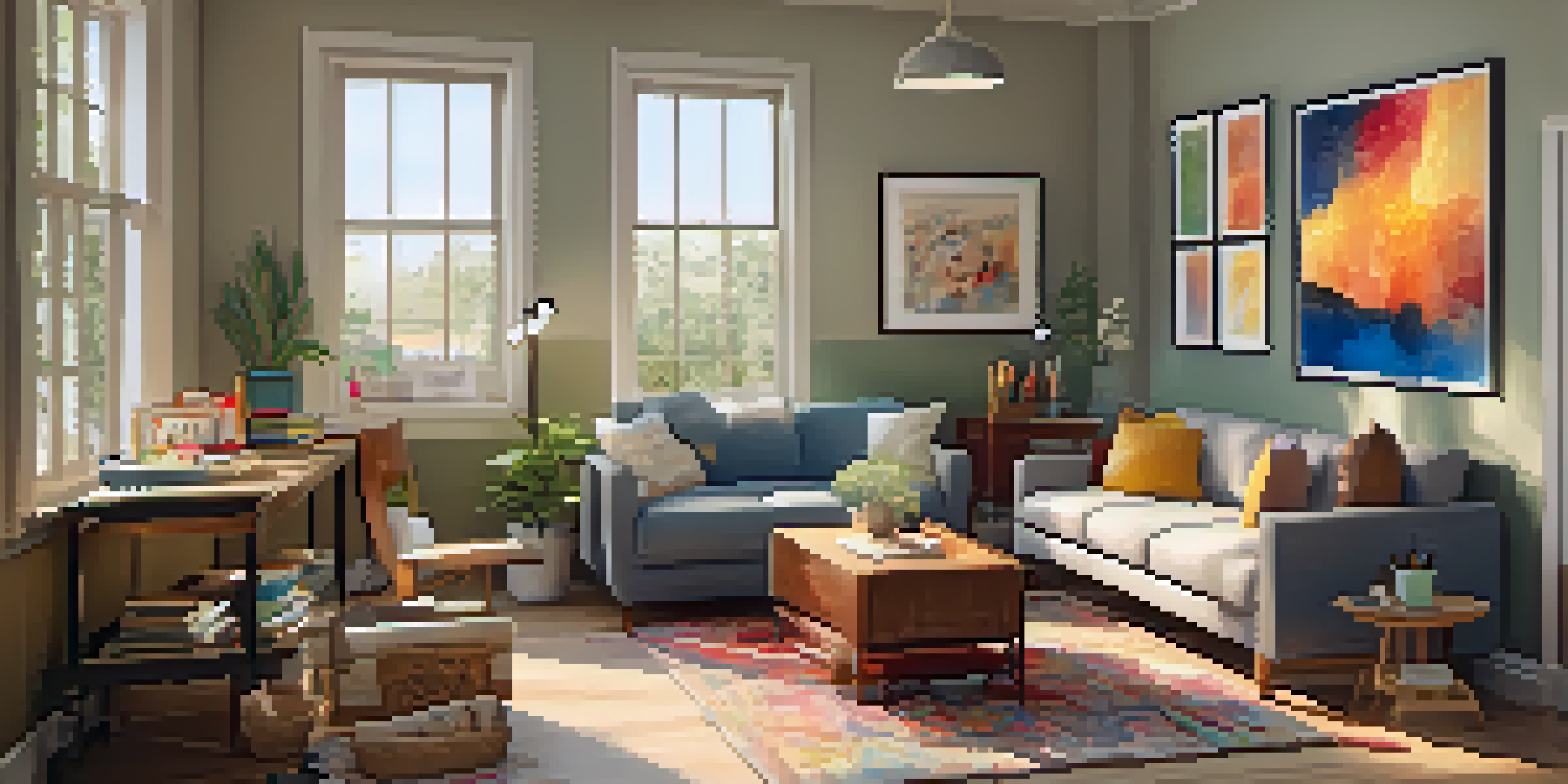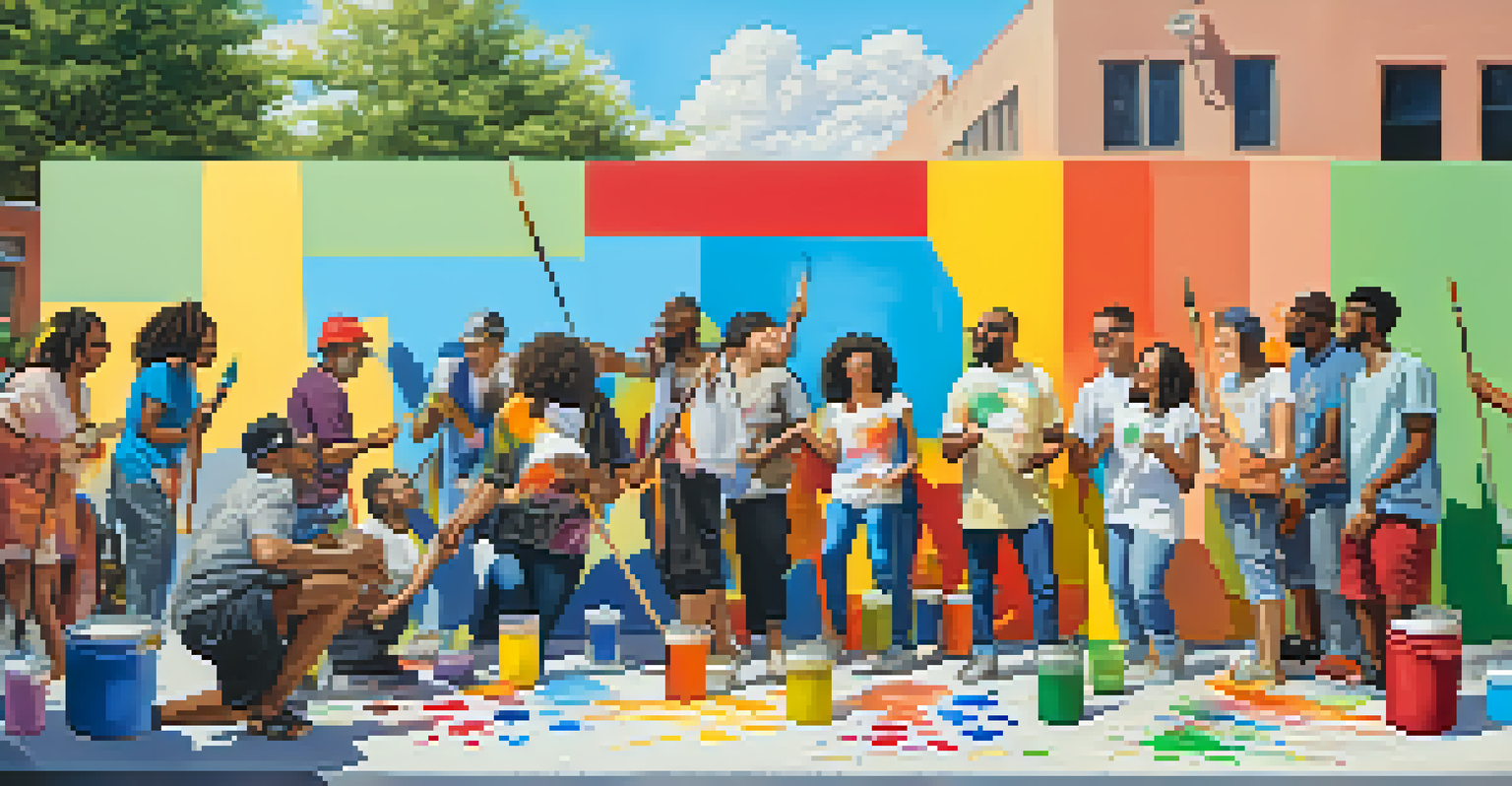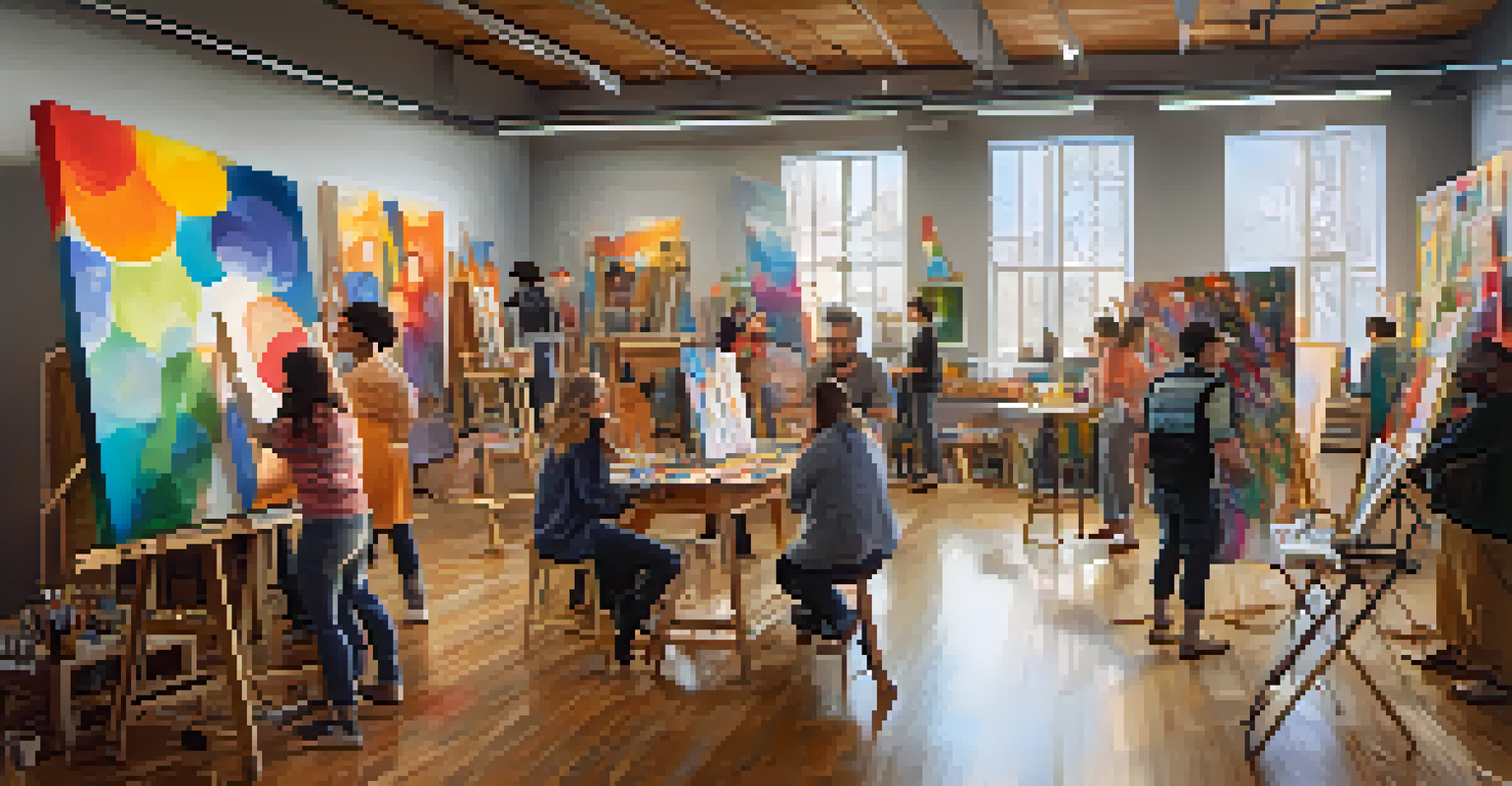Creating Safe Spaces with Art for Emotional Expression

Understanding the Concept of Safe Spaces
Safe spaces are environments where individuals feel secure to express their thoughts and emotions without fear of judgment. These spaces can be physical, like a community center, or virtual, such as online forums. The importance of safe spaces has gained recognition in various fields, particularly in education and mental health.
Art is the most beautiful of all lies.
Creating a safe space involves setting clear boundaries and fostering an atmosphere of respect and understanding. This allows individuals to share their experiences and feelings openly. Think of it like a cozy blanket – it wraps you in comfort and warmth, making it easier to share your vulnerabilities.
Incorporating art into these safe spaces amplifies their effectiveness. Art serves as a universal language that transcends barriers, enabling people to communicate feelings that might be difficult to articulate verbally.
The Role of Art in Emotional Expression
Art has a unique ability to evoke emotions and facilitate expression. Whether it's painting, music, or dance, creative outlets allow individuals to process their feelings in a tangible way. This can be especially beneficial for those who may struggle with traditional forms of communication.

For instance, a person dealing with grief might find solace in painting their feelings on canvas, turning raw emotions into a visual representation. This act can be incredibly cathartic, offering a sense of release that words sometimes cannot provide.
Safe Spaces Foster Open Expression
Safe spaces create secure environments where individuals can share their thoughts and feelings without judgment.
Moreover, engaging with art can also promote self-discovery. As individuals create, they often uncover deeper layers of their emotions and experiences, leading to greater understanding and healing.
Creating Art-Based Safe Spaces
Designing a safe space that centers around art involves thoughtful planning and intention. Start by selecting a welcoming environment filled with natural light and comfortable seating. Adding art supplies, such as paints, canvases, and music, can help set the stage for creative exploration.
Every artist was first an amateur.
Consider incorporating group activities that encourage collaboration, like mural painting or group storytelling through music. These shared experiences can foster connections and build a sense of community among participants. Just like a potluck dinner, everyone brings something unique to the table, enriching the overall experience.
Lastly, ensure that guidelines are established to maintain a respectful environment. This will help participants feel safe to express themselves without fear of criticism, making the space truly supportive.
Benefits of Art for Emotional Well-Being
Engaging in art has numerous benefits for emotional well-being. Research shows that creative activities can reduce stress, improve mood, and even enhance cognitive function. When individuals express their emotions through art, they often experience a sense of relief and empowerment.
For example, a study found that participants who engaged in creative activities reported lower levels of anxiety and depression. This underscores the importance of incorporating art into therapeutic practices and safe spaces.
Art Enhances Emotional Healing
Engaging in various art forms allows individuals to process emotions and promote self-discovery, leading to emotional well-being.
Additionally, art can foster resilience. By navigating through their emotions and creating something beautiful, individuals learn to cope with challenges more effectively, building a toolkit for emotional strength.
Incorporating Different Art Forms
Diversity in art forms can enhance the experience of emotional expression. From visual arts like painting and drawing to performing arts like music and dance, each medium offers a unique way to convey feelings. This variety allows individuals to find the form that resonates most with them.
For instance, someone who feels more comfortable with movement may thrive in a dance workshop, while another might find peace in a quiet painting session. Encouraging participants to explore different forms of art can lead to unexpected discoveries about their emotions.
Moreover, blending multiple art forms can create a richer experience. Imagine a workshop where participants paint while listening to soothing music – the combination can deepen emotional engagement and create a more profound sense of connection.
Case Studies of Successful Art Programs
Several organizations have successfully implemented art-based programs that foster emotional expression in safe spaces. For example, the 'Art for Healing' initiative provides workshops for individuals dealing with trauma where they can express their stories through visual art.
Participants have reported significant improvements in their emotional health, highlighting how a supportive environment combined with creative expression can lead to healing. These case studies prove that art is not just a pastime; it can be a powerful tool for transformation.
Community Builds Through Art
Art-based programs encourage collaboration and connection, enriching the community and enhancing emotional expression.
Another notable example is community mural projects, where residents come together to create public art. These projects not only beautify neighborhoods but also build community connections and provide a platform for collective emotional expression.
Encouraging Participation in Art Spaces
To create thriving art-based safe spaces, encouraging participation is key. This can be achieved through outreach and marketing that emphasizes the benefits of creative expression for emotional well-being. Highlighting personal stories and testimonials can resonate with potential participants.
Consider hosting open houses or free introductory workshops to invite individuals to explore the space without pressure. Just like a welcoming friend, providing a low-stakes introduction can make all the difference in someone feeling comfortable to join.

Additionally, fostering a sense of ownership among participants can encourage ongoing engagement. Allowing them to contribute ideas for future workshops or activities helps create a community where everyone feels valued and invested.